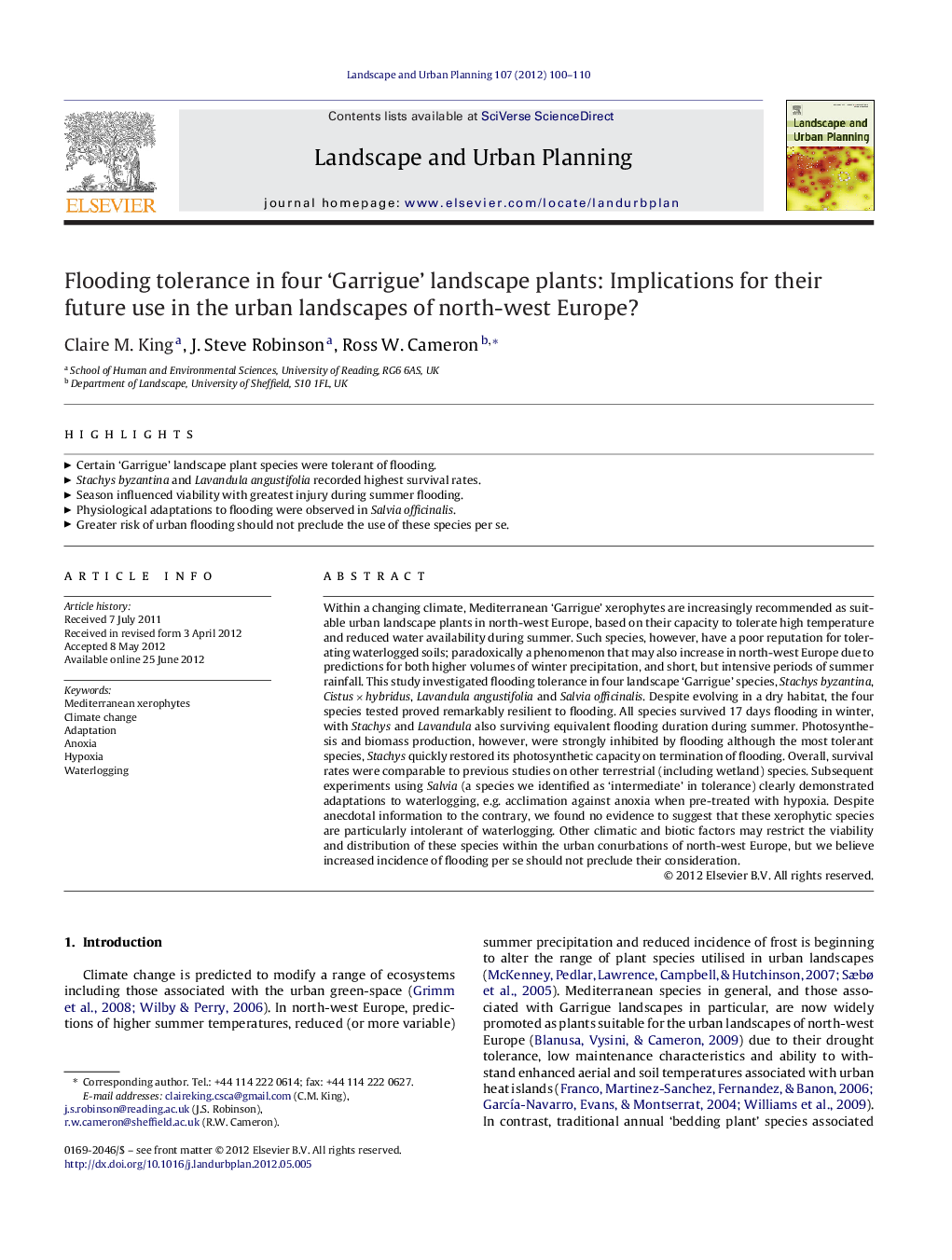| Article ID | Journal | Published Year | Pages | File Type |
|---|---|---|---|---|
| 1049439 | Landscape and Urban Planning | 2012 | 11 Pages |
Within a changing climate, Mediterranean ‘Garrigue’ xerophytes are increasingly recommended as suitable urban landscape plants in north-west Europe, based on their capacity to tolerate high temperature and reduced water availability during summer. Such species, however, have a poor reputation for tolerating waterlogged soils; paradoxically a phenomenon that may also increase in north-west Europe due to predictions for both higher volumes of winter precipitation, and short, but intensive periods of summer rainfall. This study investigated flooding tolerance in four landscape ‘Garrigue’ species, Stachys byzantina, Cistus × hybridus, Lavandula angustifolia and Salvia officinalis. Despite evolving in a dry habitat, the four species tested proved remarkably resilient to flooding. All species survived 17 days flooding in winter, with Stachys and Lavandula also surviving equivalent flooding duration during summer. Photosynthesis and biomass production, however, were strongly inhibited by flooding although the most tolerant species, Stachys quickly restored its photosynthetic capacity on termination of flooding. Overall, survival rates were comparable to previous studies on other terrestrial (including wetland) species. Subsequent experiments using Salvia (a species we identified as ‘intermediate’ in tolerance) clearly demonstrated adaptations to waterlogging, e.g. acclimation against anoxia when pre-treated with hypoxia. Despite anecdotal information to the contrary, we found no evidence to suggest that these xerophytic species are particularly intolerant of waterlogging. Other climatic and biotic factors may restrict the viability and distribution of these species within the urban conurbations of north-west Europe, but we believe increased incidence of flooding per se should not preclude their consideration.
► Certain ‘Garrigue’ landscape plant species were tolerant of flooding. ► Stachys byzantina and Lavandula angustifolia recorded highest survival rates. ► Season influenced viability with greatest injury during summer flooding. ► Physiological adaptations to flooding were observed in Salvia officinalis. ► Greater risk of urban flooding should not preclude the use of these species per se.
